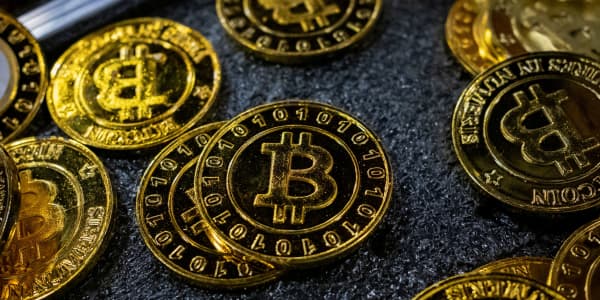The biggest fund companies in the world are engaged in a fee war, but the battle may have reached a level where it's no longer offering much of a benefit to investors.
It's taken as fact in the fund world that fee pressure on fund companies and any reduction in fees is a good thing for investors — fund companies sacrificing revenue for the sake of generating greater returns for investors. But some exchange-traded fund (ETF) experts argue that the fee war in the ETF market, where it has been fiercest, has reached the point of diminishing returns for shareholders. It could even leave investors in a "fog of fees" that make them battlefield casualties rather than victors.

In November, BlackRock's iShares ETF family cut fees on seven of its funds, including dropping the fee on its Core S&P Total U.S. Stock Market ETF (ITOT) from 0.07 percent to 0.03 percent. On the same day, Charles Schwab announced a fee cut on its Large-Cap Core ETF (SCHX) from 0.04 percent to the industry-leading low expense ratio of 0.03 percent. A few days later, Schwab also lowered the fee on its U.S. Broad Market (SCHB) to 0.03 percent fee.
The moves put both ETFs below the fee charged by the fund company that is synonymous with low fees — Vanguard Group — and its Total Market ETF (VTI), which has a fee of 0.05 percent. Schwab had previously been the lowest fee provider at 0.04 percent.
It all sounds great, but then why does Paul Britt, senior analyst at FactSet Research Systems, say, "I'm glad fees are coming down, but I maintain that a 2-basis-point fee difference is a lousy way to pick a fund."
Lowest fee ETFs
| Ticker | Name | Expense Ratio |
| TFLO | iShares Treasury Floating Rate Bond | 0 |
| ITOT | iShares Core S&P Total U.S. Stock Market | 3 |
| SCHB | Schwab U.S. Broad Market | 3 |
| SCHX | Schwab U.S. Large-Cap | 3 |
| SCHZ | Schwab U.S. Aggregate Bond | 5 |
| VOO | Vanguard S&P 500 | 5 |
| VTI | Vanguard Total Stock Market | 5 |
| SCHC | Schwab International Small-Cap Equity | 6 |
| SCHD | Schwab US Dividend Equity | 6 |
| SCHG | Schwab U.S. Large-Cap Growth | 6 |
| SCHV | Schwab U.S. Large-Cap Value | 6 |
(Note to chart: Expense ratio in basis points. For example, 3 basis points, or 0.03 percent.)
Britt's not the only one to express skepticism about the positive notice that the fee reductions in the ETF world have received.
"The cost of ETF investing is more than just a couple of basis points in the expense ratio," said Tom Lydon, editor and publisher of ETF Trends and CEO of Global Trends Investments. "While low expense ratios are nice for keeping costs down in long-term buy-and-hold investments, investors should also consider other implicit costs," he said. Lydon added, "While cheap fees are a nice selling point, investors shouldn't solely rely on low expense ratios when selecting an ETF."
To understand what Britt and Lydon are getting at, investors need to become familiar with a term in the ETF world that is critical to expenses but rarely considered by average investors: tracking error — how much a particular ETF's return may deviate from the return of the ETF's underlying benchmark.
I'm glad fees are coming down, but I maintain that a 2-basis-point fee difference is a lousy way to pick a fund.Paul Brittsenior analyst, FactSet Research Systems
Britt said the fee is easy to understand. The ETF company subtracts it from the fund annually in cash — 3 basis points, for example, or 0.03 percent of fund assets. So a lower fee does mean less cash from the fee going back to the fund company. However, tracking error — which incorporates the annual fee — also includes additional sources of cost (internal trading costs, including the market bid/ask spread, portfolio optimization, good or bad portfolio management, and securities lending fees, a practice that allows funds to lend out their portfolio holdings to others in market at a profit).
In all, tracking error measures the difference of the fund's net asset value (NAV) versus the index — that's why fund performance data always shows both the NAV and the index value. And those values can diverge significantly.
Let's take a look at the U.S. total market funds that were the most recent foot soldiers in the ETF fee war.
The iShares Core S&P Total U.S. Stock Market ETF has its industry-leading expense ratio of 0.03 percent, but its maximum downside tracking error (a measure or variability) over a 12-month period is -0.13 percent, and median tracking error (or what to expect typically over one year) of -0.08, according to ETF.com. Both percentages are expressions of annual cost, or "apples to apples," as the saying goes. The fee is expressed as a positive; tracking difference is typically expressed as a negative.
How does the iShares ETF compare to its Schwab rival? The Schwab U.S. Broad Market ETF has a maximum downside tracking error of -0.03 percent and median of 0.02. And how about the comparable Vanguard Total Stock Market ETF, which is now the "expensive" one in the bunch, at a fee of 0.05 percent. Its maximum downside tracking error is -0.03 and median -0.01. The median tracking error between the iShares ITOT ETF and the other two ETFs is much larger than the fee differences between the funds.
So which is the best fund? Not necessarily the next one to lower its expense ratio by one more basis point.
At 3 basis points or 5 basis points, Britt contends that the ETF is essentially "free to hold in either case," and investors need to ask themselves more detailed questions, not just tracking error but also what is the exact exposure they want (underlying indexes in ETFs are not all the same). IShares did announce a new index for ITOT with the fee reduction, which will influence its future tracking error data. Its fee reduction will also influence future tracking error.
Tracking error can exact a more extreme toll on performance than in the above example, too, with some ETFs' true cost exceeding the expense ratio by a range of 50 basis points to even 90 basis points.
"The average investor should tune out when the funds leapfrog over each other with ETF fees," Britt said. Moreover, "it's a lousy reason to jump from one ETF to another," he added. "They all want to be known as the low-cost provider."
This is not to say that fund companies don't have good reason to lower fees on ETFs, and they state the case plainly — and not wrongly.
A Schwab spokeswoman said, "In short, it all matters to investors: commissions, expenses, spreads, choice and transparency."
The Schwab spokeswoman added, "If you plan to hold an ETF for many years, the expense ratio can become more important than transaction costs, like commissions and bid/ask spreads.The more frequently you trade, the more important it is for you to pay attention to commissions and bid/ask spreads. ... But for investors who plan to hold for the long haul, operating expenses are likely to matter more."
A BlackRock spokeswoman said, "Fees are part of the equation, but many long-term ETF investors often consider the index, performance and tax efficiency of their ETF investments."
As it has built out its core series of ETFs to compete with Schwab and Vanguard, one of iShares' aims is to offer a series of core asset allocations that are held for the long term.
Will the war ever end?
The fee war is not going to end.
In fact, Lydon said many ETF providers have tried to steer the conversation away from the "fee war" label, as fund sponsors race to one-up each other in slashing fund expense ratios, instead citing economies of scale as the main reason for lower costs.
And Lydon said that to an extent, economies of scale does provide a credible reason as the global ETF industry tops $3 trillion in assets. "Since the majority of ETFs are passive index-based products, it would make sense that these automated investment products may see costs lowered if fund companies garner enough assets under management to make it economically viable to sustain lower fees as a way to further develop their brands."
Vanguard, Schwab and iShares all offer commission-free trades on the respective brokerage platforms, which suggests that the main source of revenue from operating the ETFs comes through the expense ratios. But a fund provider may lower the fees to a point where, minus partnership fees, expense ratio–related revenue could be zero. This does not mean that operating an ETF may be unprofitable because of securities lending programs.
"It's about market share and competing aggressively, and they may make money on some ETFs and on others not," Britt said.
In some cases, that will be good for investors. But in others, the answer to the question of low fees benefiting investors is more complicated.
Britt conceded that a 2-basis-point difference over 25 years equals a cumulative 50 basis points of return, and "all else being equal, I want the 50 basis points. But all else isn't equal," he said.








